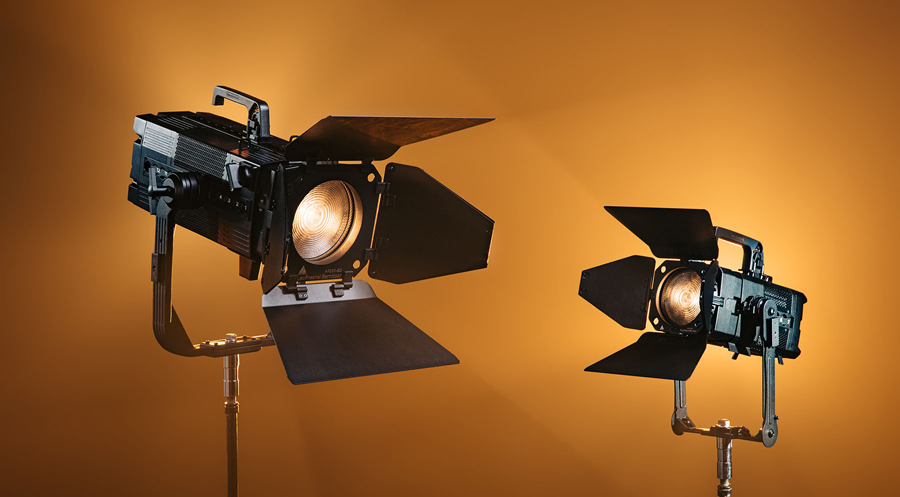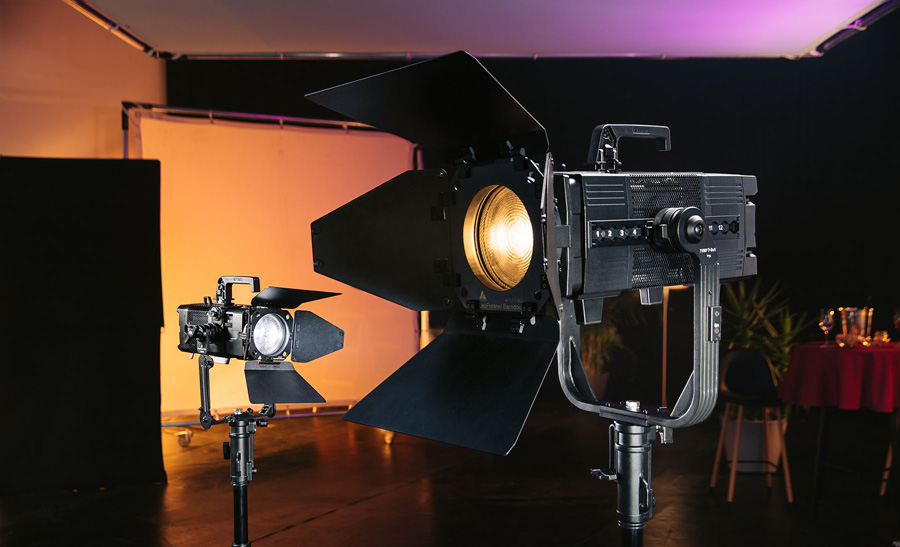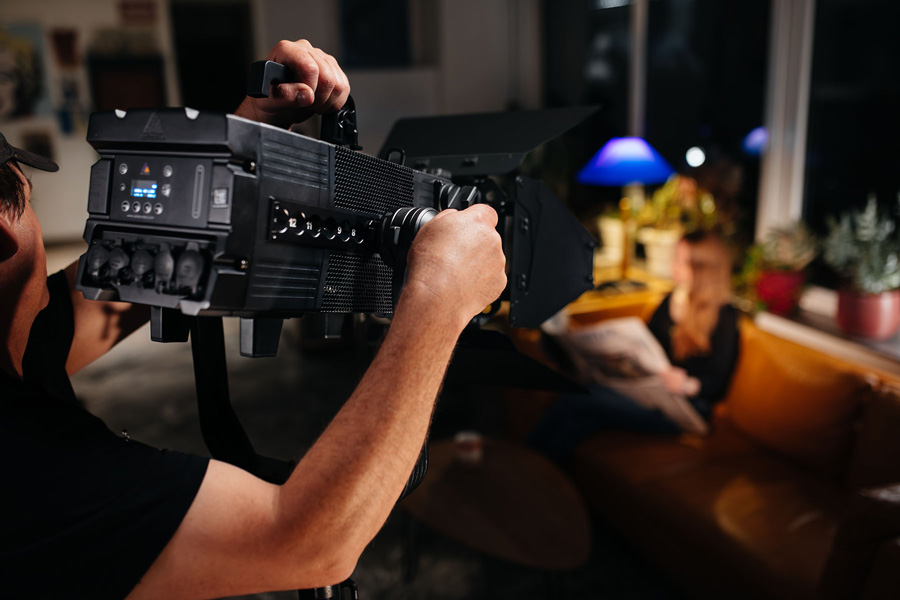We could summarize the history of the fixture manufacturer Astera, in two distinct periods. To make it simple, a break-up took place in 2018, with its commitment to the world of cinema, and a line of unique and iconic fixtures. A difference that can be found in the different names of its product ranges.

From 2014 to 2018, then later in a more punctual way, the X series brought together a series of PARs, tubes, and bars, all LED, wireless, and with great technical commitment. The AX1, AX2, AX3, AX5, AX9, and other PiXelBrick find a well-deserved spot in the event and hosting sector, without however revolutionizing a very saturated market.
Everything will change when, between 2018 and 2019, Astera offers fixtures with much more poetic names like Titan, Hyperion, and Helios, dedicated to filming (TV and Cinema). The tubes quickly became essential for their extreme versatility and the incredible quality of their light.
Their surnames inspired by Greek mythology (Hyperion being one of the Titans, master of light, also the father of Helios) resonates strongly with Astera, derived from Astraia, the star daughter of Zeus. A prophetic choice that places these fixtures within a few months in the constellation of essential luminaires, recalled here on video by Jesper Sorensen, Astera product manager.
Then appeared the small Hydra panel and the NYX bulb, goddess of night, and a well-thought-out hanging system for discreet and efficient light sources in the smallest and tightest places. And it was at Prolight+Sound that a “deus ex machina” of two divine and feline fixtures, the LeoFresnel and the PlutoFresnel, were unveiled before a select audience.
Pluto & Leo Fresnel
Sublimated vision of the Fresnel, Astera R&D has designed two innovative luminaires, the culmination of its research on wireless and ergonomics personified. Around a revisited Cob Titan source, RGB along with Mint and Amber, the PlutoFresnel and LeoFresnel are recognizable by their respective power.
For the Pluto, 80 W of power consumption, the size of a large 5 or 6 kg torch, and a flux equivalent to a 300 W Tungsten. The Leo, majestic, has 250 W of LEDs, 16 kg, and a size that matches its brightness of 1000 W Tungsten.
For the light source, Astera has succeeded in integrating its famous Titan led engine into a single beam, with a specific optical setup and an unbreakable polymer lens. The result, which is particularly noticeable during demos, makes it possible to obtain a uniform flow, and without the chromatic aberrations or the slightest leaking of secondary colors which frequently occur. The manual zoom offers a range from 15° to 60°, from “spot” lighting to wide “wash” coverage.
Astera makes a point of keeping a slight margin on the power of the LEDs to preserve their lifespan. The Pluto is equipped with 105 W of RGBMA LEDs limited to 80 W, while the Leo benefits from the most powerful source integrated by the German manufacturer, with its 350 W of color LEDs limited to 250 W.
The colorimetry obtained is of the same quality as that of the HydraPanels or the Tube Titan, with a white range of 1750 to 20,000 K, a TLCi/Cri Ra ≥96, and multifactor control: RGB, HSi, X/Y, Green/ Mag and gel references. Adding to its qualities, Astera associates a dimmer and a linear electronic strobe from 0 to 25 Hz, and a Flicker Free guarantee at 25 or 50 frames/s.

We also have the pleasure to see the new Astera menu and its famous slider to adjust all its parameters with the swipe of a finger, as well as an adjustable fan/ventilation system. The fan offers three choices of speeds, an auto and/or a silent mode (without ventilation). The fixture does not adjust its power level immediately, but monitors its temperature and only dims when it overheats. This makes it possible to shoot for a short time in complete silence.
The user can control these Fresnels in different ways. Manually, with the screen located at the back, but also via DMX cable, with an infrared remote control, in wireless DMX CRMX, or with the AsteraApp app. The 2 fixtures are equipped with a Timo RX LumenRadio reception module.
The wireless concept also applies to the power supply, since the 2 sources are equipped with an internal battery, with an autonomy of up to 20 hours by lowering the light output power. The Seamless Runtime function synchronizes the desired duration of use with the light intensity, in a completely transparent way. The maximum flow will be possible in MAX mode, in this case, the minimum guaranteed autonomy will be 3 hours for the PlutoFresnel and 2 hours for the LeoFresnel.
If this is not enough, it is possible to connect 1 RuntimeExtender (or 2 in the case of the Leo) and install external V-Mount or Gold-Mount batteries of 14.4V or 26V. The Fresnel yokes also include mounting points for the RuntimeExtender. For permanent installations, it is recommended to use a mains power supply, either directly with a PowerCON in the case of the Leo, or with a separate power supply and a hybrid cable for the power and DMX for the Pluto.

Beyond the wireless capabilities and the quality of their light output, the Leo and PlutoFresnel are packed with innovations, and fixtures within several accessories requested by the DOP to satisfy their creativity.
Each Fresnel has all 4 sides fitted with Aero rails to attach a large number of accessories, including a large handle to use them by hand, or ultra-fast yoke clamps (the YokeBase). The removable yokes have an azimuth 360° wing-nut clamping system, for RunTimeExtender, 2 fold-out supports to be placed on the ground and a central notch for a standard TVMP adapter.
On the front side, a gel holder allows you to install an 8-plane barndoor with sharp enough edges to cut/block the beam perfectly. By removing the barndoor and the lens, the Fresnel can either work in open source, with beautiful shadows, but will also be able to be fitted with future sources. Astera has specially designed them to transform its Fresnel into premium profile fixtures with 16-36° focal length, a gobo holder, and 4 framing shutters!
With an infinite eye for detail, the LeoFresnels come with Rabbit-Rounder adapters, an ultra-simple attachment system developed by DOP Choice for its accessories: Octa, Snapbag, and Lantern. In the field of hybrid cinema/TV fixtures, Astera is increasingly establishing itself as an absolute reference. Not only is the finesse of its light a rare asset, but the attention given to every detail, as well as the quality of its wireless and battery-powered fixtures, is practically unbeatable.
More information on the Astera website







